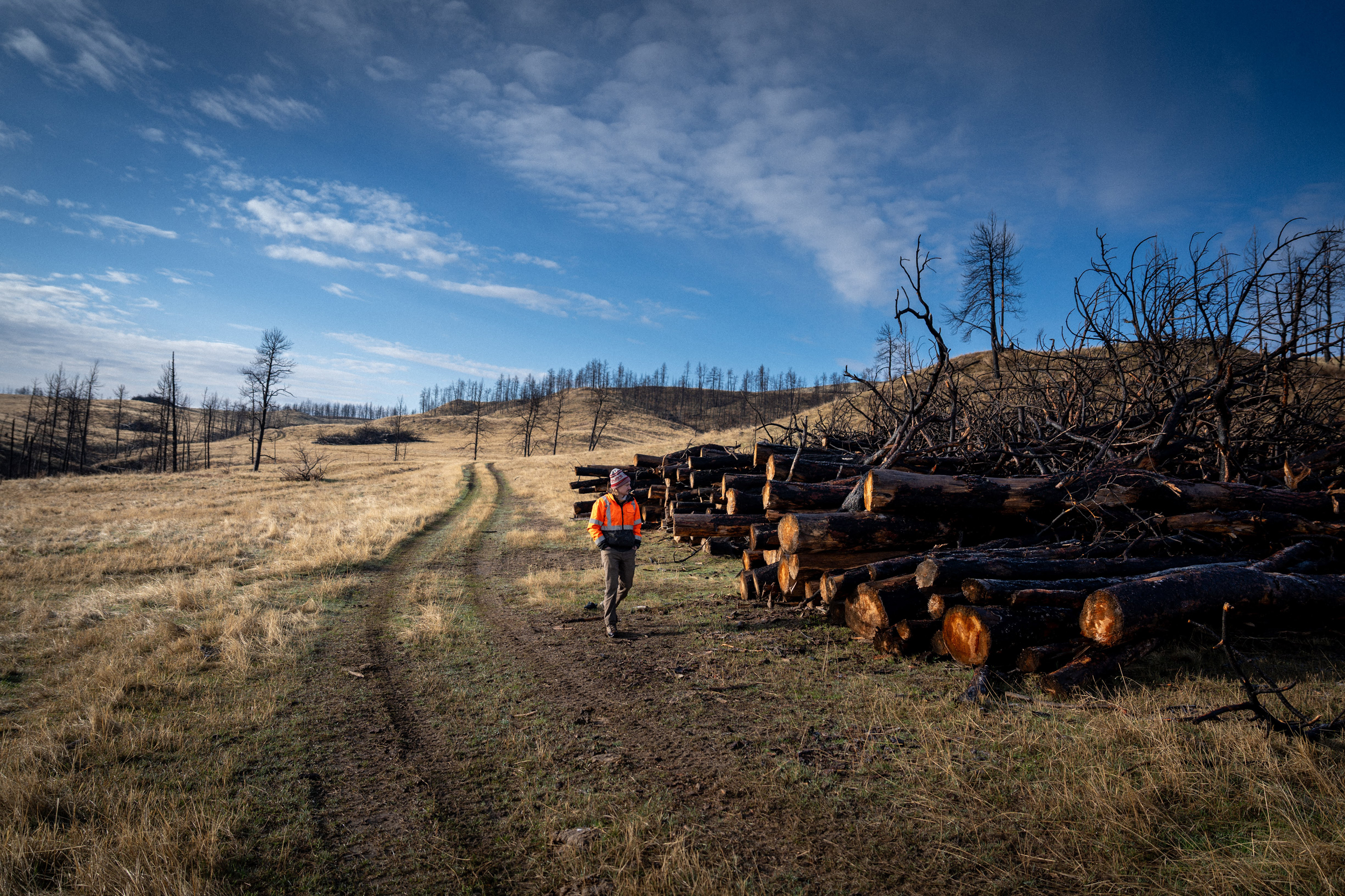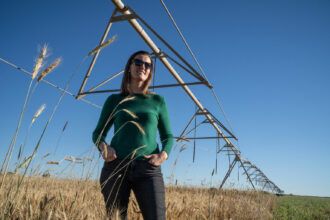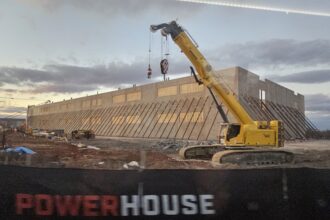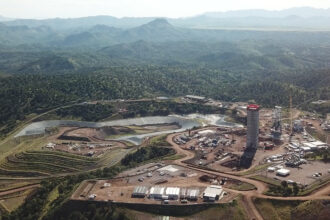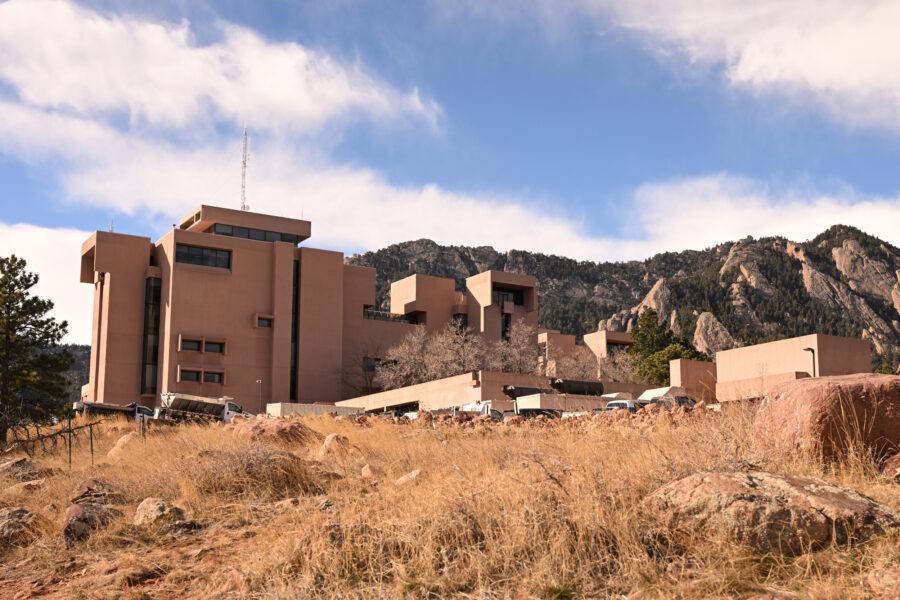Rebecca Gentry can clearly picture the first time she saw her family’s ranch outside of Hardin, Montana, after the wildfire. A week after the burn, “The ground was still smoking,” she remembers. “There were huge holes in the ground where the trees used to be. It was almost impossible to look at.”
Normally a stretch of rolling, golden hills dotted with ponderosa pines, the landscape was painted a uniform gray.
All told, the 2021 PF Fire killed more than 50,000 trees on the Gentry ranch.
Almost four years later, in June 2025, Gentry stood on a rise, gazing into a 22-foot pit dug into a hillside on her property. A feller buncher that cuts down whole trees and a log loader chugged along inside the hole, grabbing handfuls of charred logs from a nearby pile in their clawlike grapples. Branches crackled under the treads as the log loader spread the wood evenly across the pit’s bottom.
As far as anyone could tell, this was the country’s first biomass burial project in a post-wildfire landscape, and it was up and running.
Bill Layton, director of forest operations for Mast Reforestation, a company better known for bringing trees back to surfaces denuded by fire or other disturbances than for putting them underground, stood next to her. “This may not look exciting, but it’s very exciting,” he said with a grin.
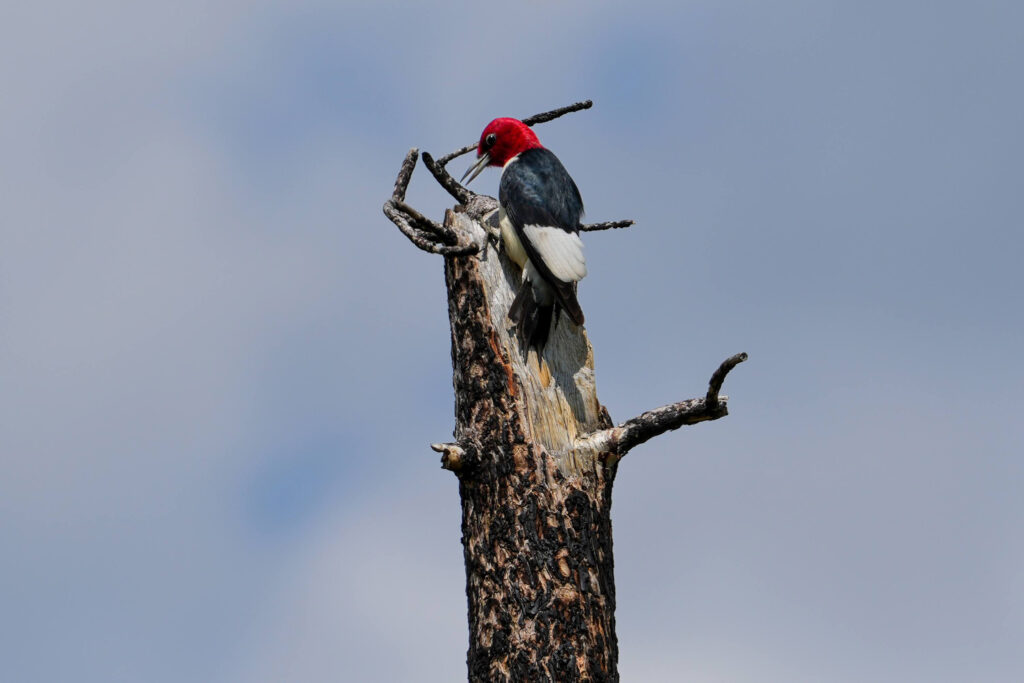
Gentry first reached out to Mast looking for help planting trees, not burying them. There was no way she could afford to restore the forests across the entire ranch. It turned out, though, that the easiest way to get new trees on the landscape was to bury the old ones.
Biomass burial is a relatively new entry into the high-tech world of carbon sequestration, based on a very low-tech idea: bury wood (or other biological waste) so that it won’t decompose. The carbon stored within the tree—that otherwise would have been reemitted into the atmosphere via rotting or burning—will instead be sequestered underground. The companies doing the burying then make money by selling carbon credits to buyers who want to offset their own emissions.
“This is basically a dry landfill,” Layton said. When the company finished filling the wood vault last August, Mast topped it with a multilayered cap of materials including compacted soil, gravel and a woven, permeable polypropylene fabric. “The various funguses in the wood will eat the oxygen very quickly, so it’ll be an oxygen-free environment. The idea is that dry, oxygen-free and cool [conditions] will preserve the wood for a long time.” The company guarantees that means at least 100 years. Perhaps longer, say proponents. One team of climate scientists found a 3,775-year-old cedar log almost perfectly preserved in clay-rich soil in Canada, 95 percent of its carbon still intact.
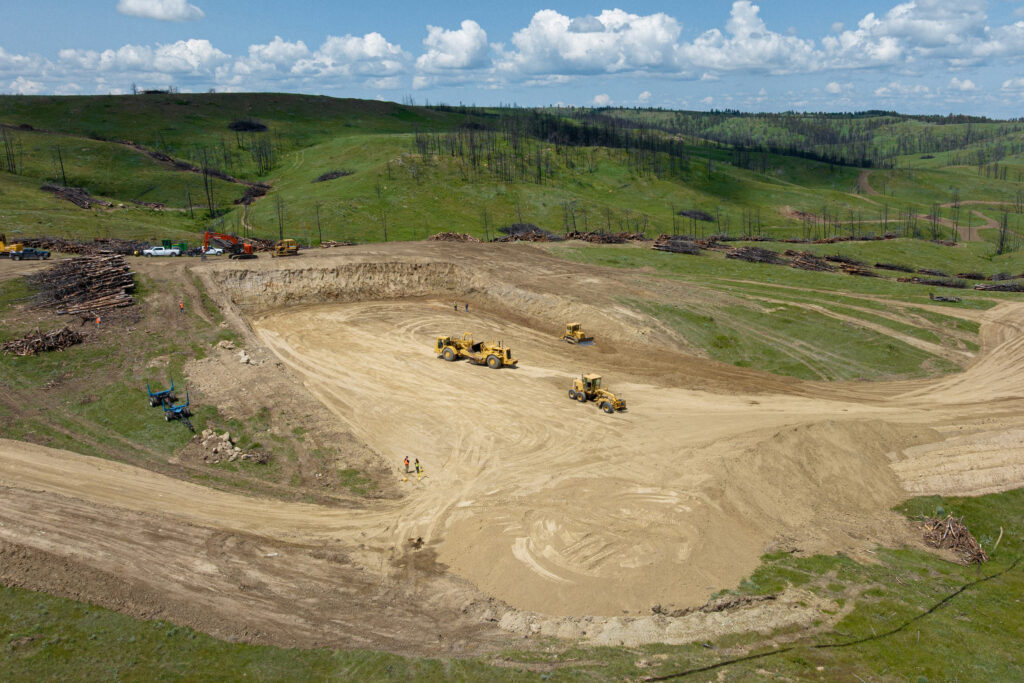

The 22-foot pit on the Gentry ranch at the beginning of the log loading process (left) and the filled biomass burial chamber (right). Credit: Mast Reforestation
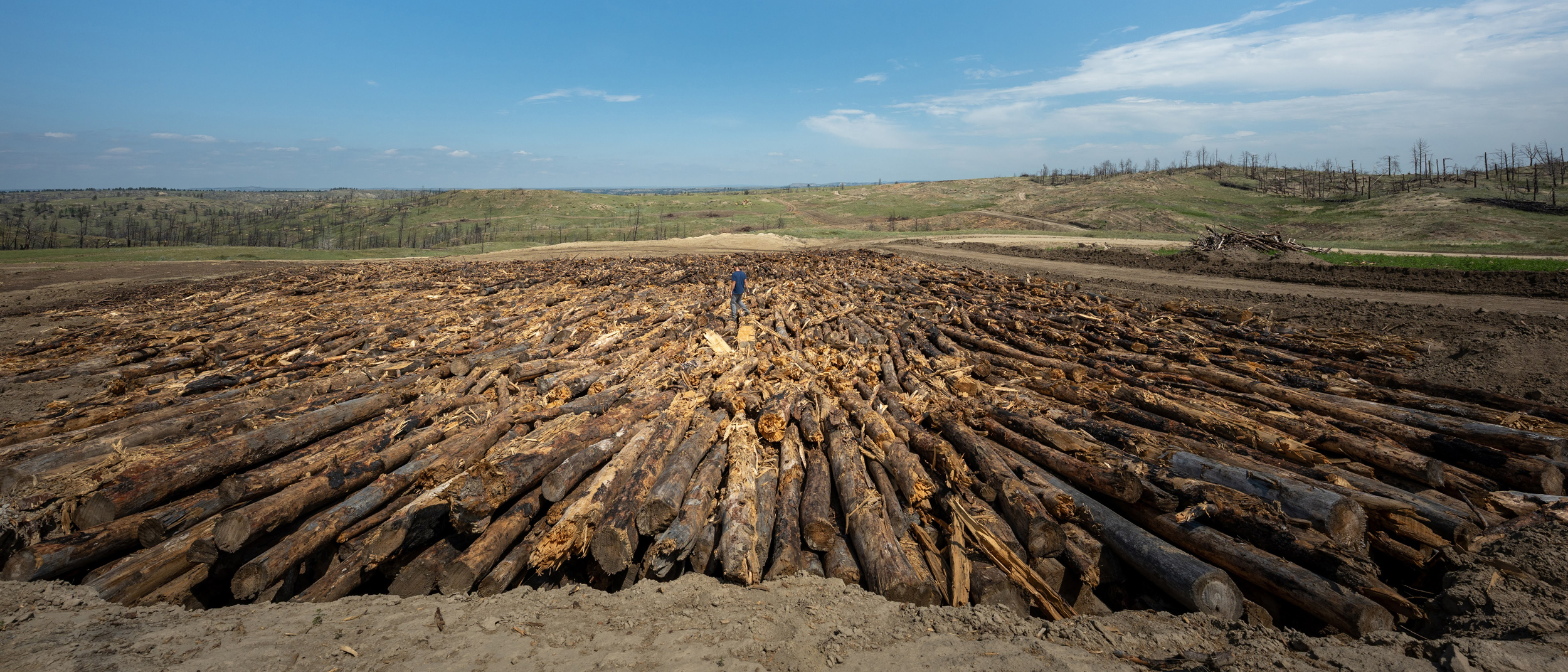
Mast isn’t the first U.S. company to get into the biomass burial business. Arkansas-based Graphyte compresses sawdust and other timber waste products into bricks to bury; in Colorado, Wood Cache seals off logs from local forest-thinning operations underground. But this Montana project is the first to tie biomass burial credits to wildfire restoration. Mast buried more than 10 million pounds of fire-killed wood at the Montana site, generating about 5,000 tons of carbon removal credits. The company expects to sell them for about the same price as biochar credits (publicly listed around $100 to $200 per ton), but cautions that the price will vary depending on the buyer and contract details. The money from those sales will pay for replanting ponderosa pines on Gentry’s ranch next spring.
Biomass burial is particularly attractive to carbon credit buyers because it sequesters carbon immediately to generate credits. A more conventional tree-planting credit, on the other hand, typically takes years to come to market, until the tree has grown large enough to hold the requisite amount of carbon. That’s what inspired Mast—at its core a reforestation company built around gathering seeds, growing seedlings and planting trees—to explore it at all. Next to seedling availability, “We realized the next-biggest challenge was around funding reforestation, especially in burn scars,” said Maria Huyer, Mast’s director of carbon product. “Trees grow really slowly, especially in the Western U.S. We couldn’t generate [reforestation] credits for 12 to 15 years.” But biomass burial credits can be sold within a year of sealing off a wood vault.

Experts say the technique can indeed be a meaningful climate solution—if it’s done the right way.
“One consideration is, where did you get the biomass?” said Bodie Cabiyo, director of interdisciplinary science at the carbon management firm Carbon Direct. For example, chopping down an old-growth tree just to bury it clearly wouldn’t make sense.
“Another question is, what are the alternative uses for that biomass?” Cabiyo added. “If you can make two-by-fours and put it in your house, that’s a way better solution.” In some situations, turning waste wood into biofuel or biochar would yield a greater climate benefit than burying it. If there’s no other use for the biomass, however, then putting it underground might be the best option.
This story is funded by readers like you.
Our nonprofit newsroom provides award-winning climate coverage free of charge and advertising. We rely on donations from readers like you to keep going. Please donate now to support our work.
Donate NowLisa Gonzales-Kramer, Mast’s vice president of forest carbon programs, pointed out that the dead trees at the Montana site were too damaged to be used for lumber; with no sawmills nearby, trucking the logs out would have been prohibitively expensive anyway. Like most landowners in this situation, Gentry was planning to burn piles of the fire-killed trees before she found Mast.
“There’s no value to that wood to anyone, except if we consider the really big, really important point of the amount of carbon stored in it,” Gozales-Kramer said. “The carbon market creates a value that wasn’t there before.”
Like any carbon sequestration project, a biomass burial credit must also have strict quality control, said Kevin Fingerman, an energy and climate professor at Cal Poly Humboldt. “If you have biomass that’s a true waste material, and you’re being conservative in how you’re accounting for the carbon sequestration in that burial, then I think you could tell a reasonable story about a net climate benefit,” he said. But, “if we say that any carbon that is going to stay buried for 100 years is permanent, that ignores what happens in more than 100 years,” he cautioned.
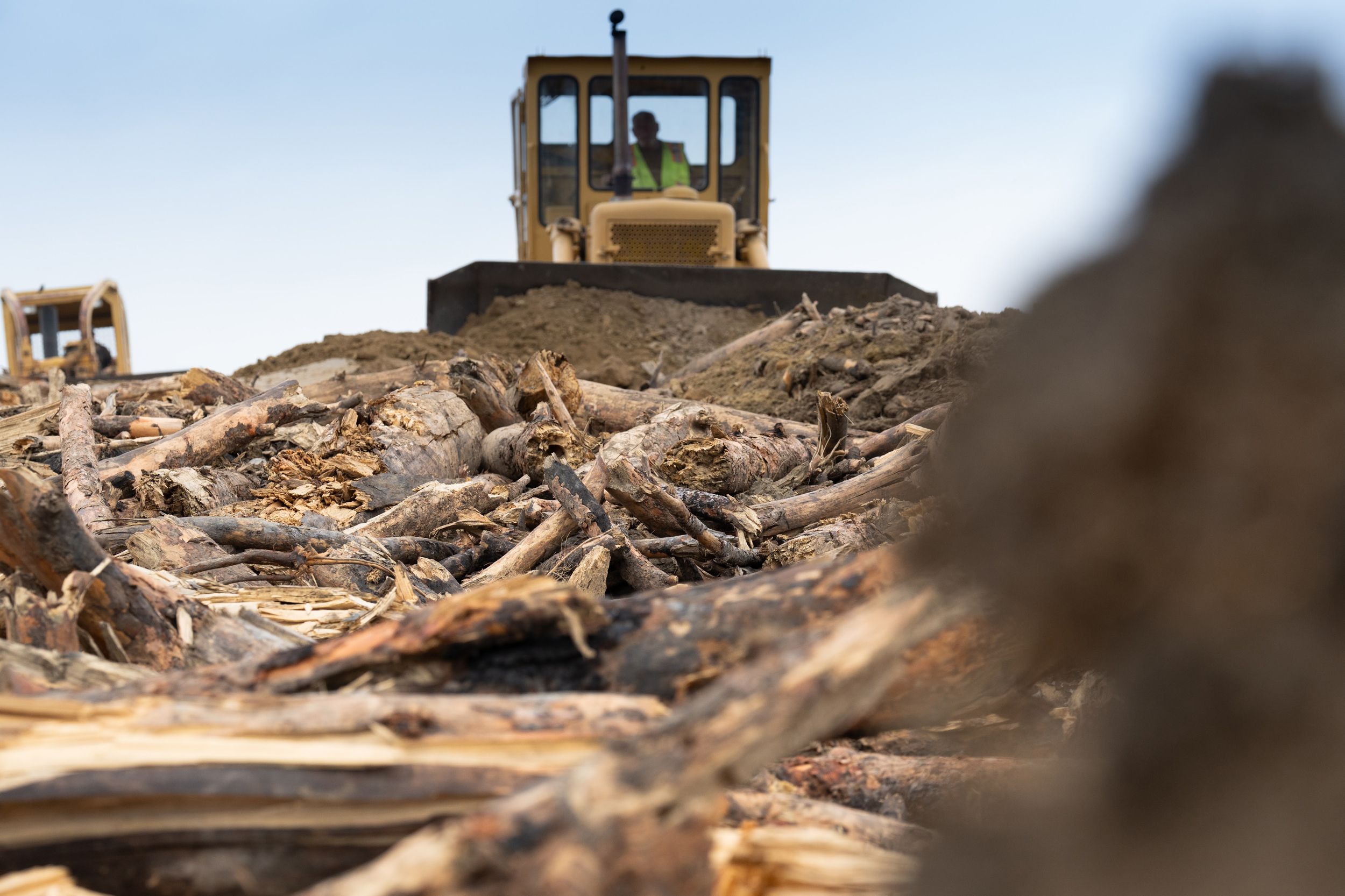
Questions also remain about how scalable the solution is. Mast employees are in talks with several landowners to develop new biomass burial projects, which they expect to be significantly larger than their pilot in Montana. The company sees opportunities to expand the work, not only in post-wildfire landscapes, but also in forests impacted by beetle kill and hurricane damage, Gonzalez-Kramer said.
Fingerman pointed out that biomass burial could also be a particularly effective tool in forest management operations such as thinning. “If biomass burial is a way to support necessary wildfire risk mitigation and long-term sustainable outcomes for forest land, that could be a knock-on benefit,” he said.
But experts say biomass burial shouldn’t be expected to take off on a large scale. Instead, it should be considered a climate solution for scenarios where other options don’t work. “It’s definitely not a silver bullet, but it’s a great solution in the right context,” Cabiyo said. “Climate change is such a big, all-encompassing problem that we need all the solutions that we have.”
On Gentry’s ranch, grass is already reclaiming the soil atop the wood vault.
The grassy hillside will likely look much like it did before the fire within a year or two, save for a handful of 12-foot poles bearing emissions monitoring equipment that ensures the buried carbon isn’t escaping. The project won’t be notable for what it left behind so much as what it didn’t: roughly 5,000 tons of carbon dioxide in the atmosphere.
Correction: A previous version of this story stated that Mast buried more than 10 million tons of fire-killed wood at the Montana site. The company buried 10 million pounds, not 10 million tons. An update to the story also clarified the nature of the polypropylene fabric used to cover the vault.
About This Story
Perhaps you noticed: This story, like all the news we publish, is free to read. That’s because Inside Climate News is a 501c3 nonprofit organization. We do not charge a subscription fee, lock our news behind a paywall, or clutter our website with ads. We make our news on climate and the environment freely available to you and anyone who wants it.
That’s not all. We also share our news for free with scores of other media organizations around the country. Many of them can’t afford to do environmental journalism of their own. We’ve built bureaus from coast to coast to report local stories, collaborate with local newsrooms and co-publish articles so that this vital work is shared as widely as possible.
Two of us launched ICN in 2007. Six years later we earned a Pulitzer Prize for National Reporting, and now we run the oldest and largest dedicated climate newsroom in the nation. We tell the story in all its complexity. We hold polluters accountable. We expose environmental injustice. We debunk misinformation. We scrutinize solutions and inspire action.
Donations from readers like you fund every aspect of what we do. If you don’t already, will you support our ongoing work, our reporting on the biggest crisis facing our planet, and help us reach even more readers in more places?
Please take a moment to make a tax-deductible donation. Every one of them makes a difference.
Thank you,

